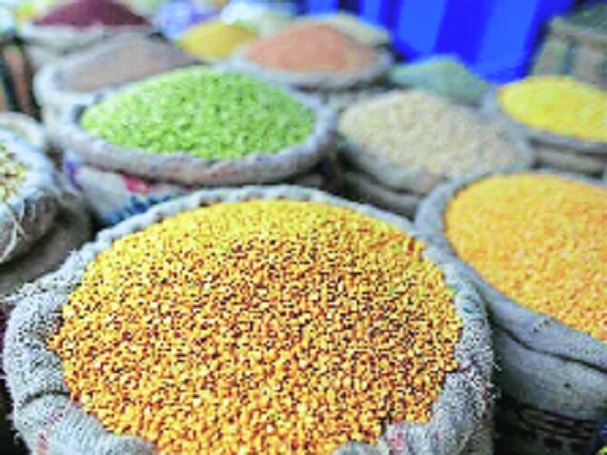Lower demand for tur dal brings down prices marginally
| Date :22-Oct-2023 |

Business Reporter :
From its record high of Rs 165-190 per kg, prices of different varieties of tur dal have come down to Rs 160-185 per kg in the last 15 days
As consumers are shying away from paying high prices for tur dal for the past few months, the agro produce is witnessing marginal dip in demand leading to correction of about Rs 5 per kg in the city’s wholesale market. From its record high of Rs 165-190 per kg, different varieties of tur dal have come down to a level of Rs 160-185 per kg in the last 15 days.
Varadi or unpolished tur dal was available at a price of Rs 180-190 per kg in the wholesale market while fatka tur dal and fod variety have seen the price tag of Rs 170-180 per kg and Rs 165-170 per kg till the end of September.
Ramesh Umate, one of leading grain dealers at the Kalamna market yard, said that there is a shortage of tur dal in the markets.
“Even as the market is witnessing shortage of tur dal in the current season, its demand is not showing any sign of growth. It is mainly because many people are not willing to pay such a high price for tur dal. They are instead buying other cheaper pulses like chana dal or vatana dal which are available at a price of Rs 65-80 per kg in the wholesale market,” he said.
In addition to this, Umate said that as there are no marriage ceremonies till Diwali, the demand for good grains will remain weak and so are the prices of tur dal.
However, he felt that there will be a shortage of tur dal for the next few months as new crop will start arriving in the markets only after December.
Umate said the prices may surpass the Rs 200 per kg mark in wholesale markets in coming weeks. In retail markets, the consumers are paying a price of Rs 185 200 per kg for tur dal. It is important to note that there is a shortage of tur dal in the domestic as well as in the international markets because of unfavourable weather conditions.
Many tur dal producing States in the country have also recorded less production in the current year compared to the previous year.
